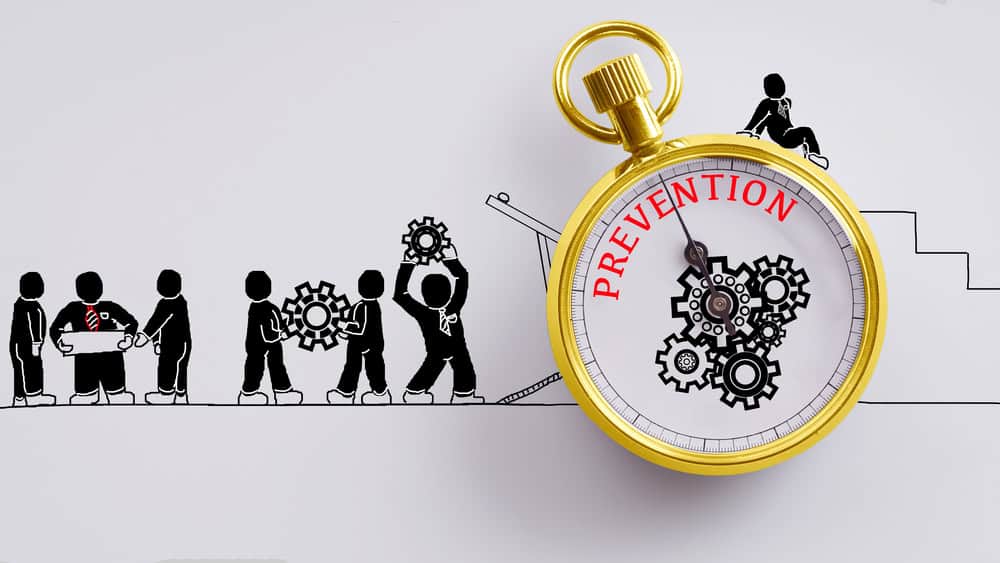“A star employee walks into your office and hands you a resignation letter. As they walk away, they leave behind an empty hole where their productivity used to be, as you swirl in disbelief with a mind full of unanswered questions.”
In the fierce battleground of modern business, talent reigns supreme.
More than innovation, infrastructure, or capital, the people – the skilled, dedicated, and passionate employees – set companies apart.
Sadly, many businesses are hemorrhaging their best and brightest every year at a rate that should sound alarm bells. While the challenge of hiring top talent is monumental, the hidden iceberg of the corporate world is retaining that talent.
As leaders, it’s essential to understand why our best employees pack up their desks and head for the door. Beyond the heartburn of seeing a stellar employee leave, there’s a financial toll: the cost of hiring and training a new recruit can be up to twice the salary of the outgoing individual.
This blog exploration aims not to point fingers or dwell on the symptoms but to uncover root causes and chart a path forward. In the following sections, we’ll peel back the layers of this critical issue, revealing the honest, often uncomfortable reasons behind such departures and, most importantly, offering innovative solutions to stop or, at least, significantly slow the exodus.
The Truth About Employee Departures

Every leader has faced that moment nightmares are made of:
A star employee walks into your office and hands you a resignation letter. As they walk away, they leave behind an empty hole where their productivity used to be, as you swirl in disbelief with a mind full of unanswered questions.
What would trigger such as life-changing decision?
After several decades of HR and business leadership, witnessing tens of thousands of departures, I’ve
learned to distill these seemingly radical decisions down to a few common causes.
And the decision to leave starts well before their actual departure, sometimes with an action as simple as finally responding to a LinkedIn message from a recruiter to “test the waters.”
That test is a significant micro-event among the many that lead to an eventual resignation. It is the beginning of a willingness to explore options and, worse for their current employer, to compare those options to their current, less-than-ideal situation.
The following causes aren’t listed in any order and often appear in various combinations as the employee decides to move on. In some cases, employees will experience all five causes before finally leaving.
But rest assured, when the pain of leaving becomes less than the pain of staying, you’ll have another resignation on your hands.
Perceived Lack of Growth Opportunities
Talented employees are often the most ambitious. They’ve joined your organization for a paycheck and a trajectory—a journey. As soon as they perceive a dead-end, their eyes will inevitably wander.
Whether it’s limited vertical mobility or lack of challenging projects, feeling stuck can be a death knell for their tenure. And if there’s no place to go with you, they’ll chart a course for a new opportunity.
Misalignment with Company Culture and Values
Every individual carries a set of personal and professional values, even if those values are ill-defined. Employees feel disconnected over time if these values clash with the company’s culture or mission.
It’s like fitting a square peg in a round hole; no matter how hard they try, it won’t align. And that misalignment leads to dissatisfaction, making exit doors look increasingly tempting.
Burnout and Overwork
According to Benjamin Franklin, “If you want something done, give it to a busy person.” He’s right.
But how do leaders often reward their top talent for doing excellent work? They shift tasks from people who aren’t getting it done to the top talent who always gets it done. Overloading your best talent, banking on their commitment and excellence can backfire.
Consistent overwork leads to burnout and chronic physical and mental exhaustion, making other opportunities seem like places of refuge rather than just another job.
Lack of Recognition
It’s a simple human need – to be acknowledged and appreciated. Regardless of the number of zeroes on a paycheck, cynicism sets in if an employee’s efforts are perpetually overlooked or undervalued.
Every unnoticed achievement is one step closer to the exit.
Inadequate Compensation
In my experience, leaders who quickly dismiss money as a reason for turnover typically pay well below market rates for their company’s roles. While money truly isn’t everything, it is undoubtedly significant.
If employees feel they can earn considerably more elsewhere – or even slightly more with additional benefits – money becomes a rationale for change. Money may not be the only reason, but coupled with the other listed factors, it can be the last straw.
In addressing these truths, it’s clear that employee departures aren’t spur-of-the-moment decisions but the culmination of prolonged feelings and experiences. However, all’s not lost.
As we transition into the solutions, remember that for every reason an employee might leave, there’s a strategy you can implement to make them stay.
Five Non-Obvious Ways to Prevent Departure

Now that we’ve examined the most common reasons employees leave, it’s time to look at the solutions which aren’t always straightforward.
Implementing these unconventional yet effective strategies takes dedication to change, accountability at all company levels, and courage to take action instead of resting in denial.
Change is hard – even good change. The benefits of the following solutions far outweigh the difficulties of implementation. And your steadily improving retention rates will reward you enough to stay the course once you begin.
Invest in Mid-Level Managers
Often overlooked, mid-level managers are the bridge between upper management and frontline workers. They’re pivotal in translating company vision and ensuring team morale.
When you invest in their training and growth – honing their mentoring skills, emotional intelligence, and strategic thinking – you indirectly foster a healthier, more inclusive work environment where employees feel heard and guided.
Regularly Re-evaluate Job Descriptions and Compensation
Roles evolve. What was pertinent a year ago may now be obsolete. Provide clarity to your employees by regularly updating job descriptions. And use those updated job descriptions to conduct market research on compensation.
Employees already know their responsibilities, the metrics used to evaluate them, and likely the market rate for their services. Regular evaluation avoids frustration, ensures they remain challenged and engaged, and prevents awkward conversations where you know the employee is right about their role and compensation, but you tow the party line and gaslight them to keep them in their position.
Do the right thing.
Promote Horizontal Movement
I like to describe a career path as a rock climbing wall instead of a ladder. Sometimes, sideways or even down are acceptable moves to get to the top.
Opportunities to explore different departments or roles can reinvigorate passion and offer a fresh perspective. Such experiences enhance an employee’s skill set and cement their bond with the organization, cherishing its flexibility.
Celebrating these types of moves in company communications takes the plan to the next level, advertising to others that “we value movement beyond “upward mobility.”
Implement a Two-Way Feedback Mechanism
Communication shouldn’t be top-down. Encourage an environment where feedback flows both ways.
Tools like anonymous surveys or open forums can empower employees to voice concerns, suggestions, or even accolades. It signals that their opinion matters, fostering a deeper sense of belonging.
It isn’t easy to find an employer who listens. When employees find one, they stay put.
Foster a Culture of Learning and Development Outside of Work Roles
Support employees in pursuing external courses, workshops, or hobbies unrelated to their primary role. Your support boosts morale and cultivates a multi-dimensional workforce.
An employee learning a new language or practicing pottery brings newfound creativity and enthusiasm, spilling over into their professional life. And many underlying skills are transferrable, helping employees embrace learning, innovation, and change in their current roles.
When you embrace these unconventional strategies, you address the underlying issues, demonstrating care for the employee’s current role, overall well-being, and future growth.
The Ripple Effect of Employee Retention

The benefits of employee retention extend far beyond cost savings. When companies keeps top performers on board, it triggers a cascade of positive outcomes that ripple throughout their organizations.
First, consistent teams translate to efficiency. Employees who understand the intricacies of their roles and the broader company landscape can streamline processes and increase productivity. These changes often lead to faster decision-making and project implementation, giving the organization a competitive edge.
Next, retaining talent reinforces a positive company culture. When people stay, it’s an endorsement of the work environment, which fosters trust and loyalty. While tenured talent feels better about the work environment, newer recruits also feel more secure and optimistic about their future, reducing the learning curve.
Additionally, consistent retention rates empower companies with a stronger brand image. Externally, retention showcases stability, making the business more attractive to potential clients, partners, and new top-talent prospects. Internally, it boosts morale, underlining the organization’s commitment to its workforce.
Finally, and perhaps most crucially, retention fuels innovation. Long-term employees are often best able to identify opportunities for improvement, be it in processes, products, or strategies. Their profound understanding of the company’s strengths and weaknesses can lead to breakthroughs that catapult the business ahead of its competitors.
In today’s fast-paced business environment, adaptability is king. Companies must recognize that their greatest strength isn’t their next product, strategy, or innovative idea—it’s their people.
When leaders understand why talented employees might depart and proactively implement measures to keep them, they strengthen their company and its teams, solidifying their growth foundation.
Investing in your workforce, fostering open communication, and prioritizing well-being and development will prevent turnover and cultivate an environment where talent thrives.
As you move forward, remember that every employee retained is a testament to your organization’s strength, vision, and commitment to excellence.

